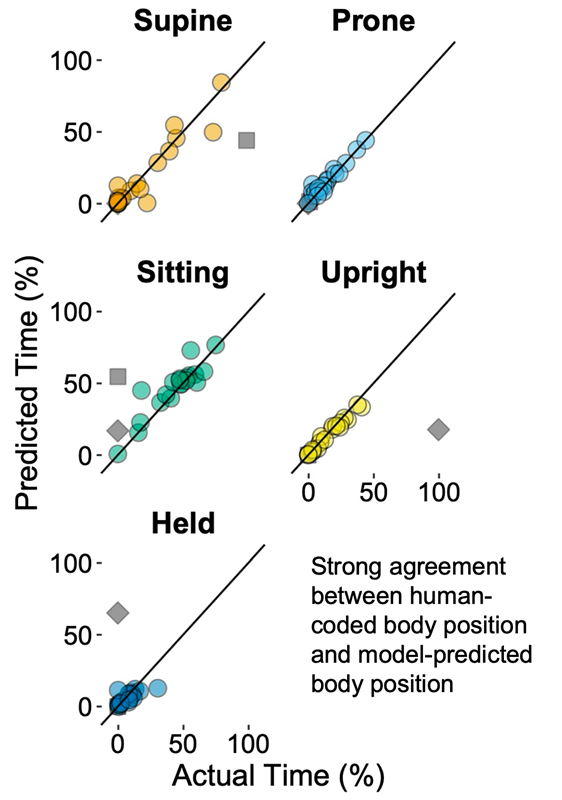Daily Move© - Infant Body Position Classification
Brief Description
Prof. John Franchak and his team have developed a prototype system that accurately classifies an infant's body position.
Full Description
Background
Knowledge of infant movement - how often and the type of movement - will help researchers and pediatric clinicians to understand an infant's motor development. However, typical methods, such as in-lab or in-clinic assessment of infants' self-selected movements, limits this assessment because they might move differently outside of their natural context (the home) and activities (play, eating, etc.) across the day. Video recording an infant in the home is also limited, because video recording failts to capture the entire movement of an infant across a day and requires tedious manual coding.
Technology
Prof. John Franchak and his team at UCR have developed a prototype system that combines inertial monitoring units (IMUs) and machine learning classifiers to detect an infant's body position. The team collected extensive video datasets which were human-coded to help train the machine learning algorithm. The developed prototype has been validated in its prediction of the infants body position.

Advantages
- Acquisition of movement metrics without the need for an expert observer.
- Comprehensive and accurate classification of infant body position - held, supine, prone, sitting, upright, etc.
- Uses commercially available sensors that do not interfere with infant movement.
- Predictive accuracy that is comparable to human coders.
- Can be used to monitor movement across an entire day irrespective of setting.
- Potential for real-time prediction.
Suggested uses
The technology is valuable to:
- Academic and clinical researchers
- Clinical practitioners
- Parents
State Of Development
The team has built a lab-level working prototype and are currently exploring:
- improvements to user interface; and,
- development of real-time predictive capabilities.
The team would be open to appropriate partnership to further the technology.
Inventor Information
Please visit Prof. Franchak's research group website to learn more about their research.
Related Materials
Contact
- Venkata S. Krishnamurty
- venkata.krishnamurty@ucr.edu
- tel: View Phone Number.
Other Information
Keywords
movement classification, activity tracking, machine learning, biofeedback, activity recognition, motor development, posture, body position, wearable sensors, human activity recognition
